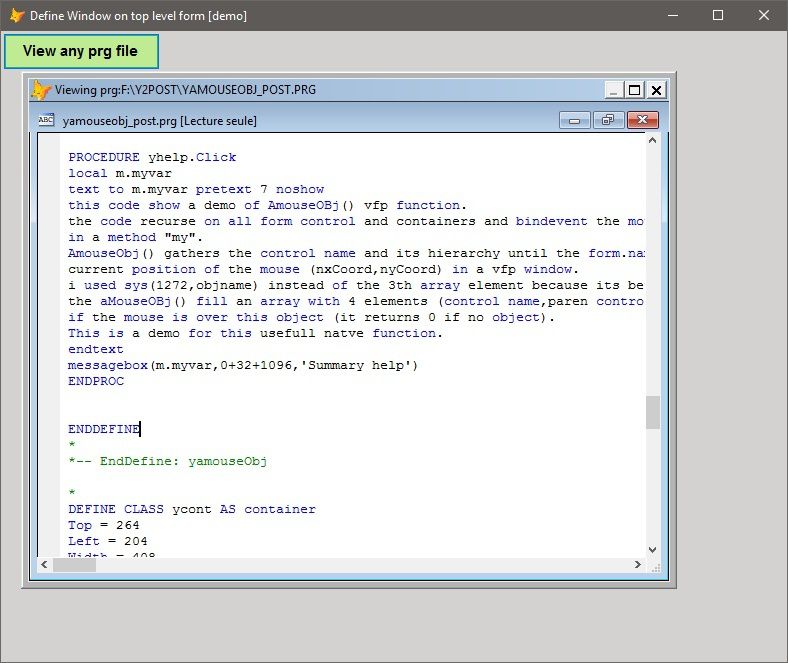

Note that the project name for this class library is NameSpaceDemo. For example, the class library shown in Listing 1.3 defines two classes in Visual Basic. Namespaces are just there to add an additional level of naming. The use of namespaces is confusing to FoxPro developers. However, if the class is a form you can use the Form Designer to build it visually and if it's a user control, you get a little container in which your control component or components appear.

That's about the size of creating and using classes in FoxPro. Inside the class, THIS refers to a property or method of the class itself. If you have parameters in a class's Init method, you can add the parameters at the end of the CREATEOBJECT() or NEWOBJECT() function call and pass them directly to the Init constructor. OName = NEWOBJECT ( "ClassName", "VCXNAME.VCX" ) oName2 = NEWOBJECT ( "OtherClass", "CLSLIB.PRG" ) Or you can skip the SET CLASSLIB and SET PROCLIB statements and use a shorter approach: OName = CREATEOBJECT ( "ClassName" ) oName2 = CREATEOBJECT ( "OtherClass" ) SET CLASSLIB TO VCXNAME ADDITIVE or SET PROCLIB TO CLSLIB.PRG ADDITIVE A single PRG can have one or more class definitions in it. Properties are created simply by assigning them values, one per line, after the DEFINE CLASS statement and before the first FUNCTION or PROCEDURE statement. The OLEPUBLIC keyword is required if you want to compile to a DLL, which is required for Web Services applications, and is generally not used by FoxPro developers unless they use COM+.

If they're defined in a PRG, the file starts with this line of codeĭEFINE CLASS Foobar AS CUSTOM (OLEPUBLIC) If they're stored as VCX files, you use the Class Designer to add properties and methods, which can be either Public, Private, or Protected. For one thing, FoxPro classes are stored either as VCX files or PRG files. And there are lots of details that differ. It uses its private properties as variables, and calls private methods to do its work. You instantiate an object based on the class, assign values to its public properties, and call its public methods. However, the general idea is the same: Classes have properties and methods.
#Vfp define class code
NET forms are source code files that don't look any different from program files. vcx (and an associated memo file with the same name and a. For one thing, FoxPro form classes are usually stored in a table with the extension. However, classes don't work exactly the same way.
#Vfp define class software
I was in heaven! My customers got more software for less money, and I could win every single bid I made. I ended up with a form that did what I needed if I set a dozen or so properties if I needed a similar form, I just usedĪnd set the same dozen properties, and the form was up and running in minutes. Gradually, most if not all of the code in the original form migrated to the class. I could base a form on this "form template," assign a value to the MainTable property, and the form would run as expected. My own approach was to build a basic form and then slowly move code out of it into an underlying class, changing form references to a specific table name to the contents of a property, so if I changed When Visual FoxPro came out, for the first time we had the ability to write generic form class code and inherit forms from it. But subsequent design changes could be painful. There was a template capability that allowed us to migrate features to the template and then stamp out similar forms like a cookie- cutter. If we needed a similar form, we cloned and modified the code. Many FoxPro developers began with version 1, which didn't have object orientation.


 0 kommentar(er)
0 kommentar(er)
